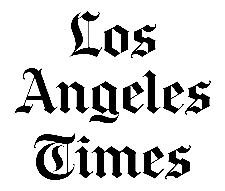Dry run, wet music
The incident made waves when a web journalist named Annie Jacobsen shared a flight from Detroit to Los Angeles in June of 2004 with 12 musicians from Syria, and their manager, Lebanese-American Elie Harfouche, as well as several air marshals. The DHS report, which comprises information from Ms. Jacobsen as well as 5 other passengers, says:
In addition to that, there were administrative errors that compounded suspicion because the Syrian visitors appeared to have expired visas, when in fact they had visas approved through July 15 and the last of them left the US in compliance with the terms of his visa on July 14."Six of the men arrived at the gate together after boarding began, then split up and acted as if they were not acquainted. According to air marshals, the men also appeared sweaty and nervous. An air marshal assigned to Flight 327 observed their behavior and characterized it as 'unusual,' but made no further reports at the time.
During the flight, the men again acted suspiciously. Several of the men changed seats, congregated in the aisles, and arose when the fasten seat belt sign was turned on; one passenger moved quickly up the aisle toward the cockpit and, at the last moment, entered the first class lavatory. The passenger remained in the lavatory for about 20 minutes. Several of the men spent excessive time in the lavatories. Another man carried a large McDonald's restaurant bag into a lavatory and made a thumbs-up signal to another man upon returning to his seat."
Those facts, and the rest of the report form which they were excerpted, led the Washington Times to title's its article on the subject "Report confirms terror dry run". In reality, the report mostly uses the incident as a case study to test intra-agency communication and preparedness to deal with future attacks of this nature. There seems to be quite a lot of finger-pointing within the government, some obviously cya in nature. For example, the Transportation Safety Administration report says:
"Federal Air Marhsals Service and FBI leadership jointly determined that the subjects could be cleared. The reported suspicious activity was determined to be unfounded, and not a terrorist threat and therefore did not merit an Homeland Security Operations Center referral."On the other hand, a former Federal Air Marshal named Robert MacLean, fired last year for revealing cost-saving cutbacks on protection for long-distance flights, says:
"This report is evidence of Homeland Security executives attempting to downplay and cover up an unmistakable dry run that forced flight attendants to reveal the air marshals and compel the pilots to open the flight deck door."I always found this case to be particularly interesting, because I attended a hafla at The Nile restaurant just off Route 3 at which Mehanna and his band played. In fact, it was during the summer of 2004, contemporaneous with the case in question, when my congressional campaign was in full swing. I was invited to swing by, and even passed out bi-lingual campaign literature.
There may not have been any terrorists on the stage that night, but for a tarab purist, the musical arrangements were downright criminal. A full drum kit? Bass guitar? إش هذه؟.
Of course, as far as Arabic music goes, I was raised listening to my grandparents' records of the old-school Arab and Arab-American performers who continued the early 20th century small-ensemble musical tradition: mutrab (singer - literally "enchanter"), oud (fretless lute), qanun (zither), kamanja (violin), and darbaka (percussion) - perhaps mijwiz (reed instrument) also.
The liner notes for a great CD, The Music of Arab Americans, point out that the slim availability of qualified musicians in the US perpetuated this small ensemble style long after it had died out in the Arab world - note the huge orchestra that used to back Um Kalthoum, complete with electric guitar and saxophone.
















